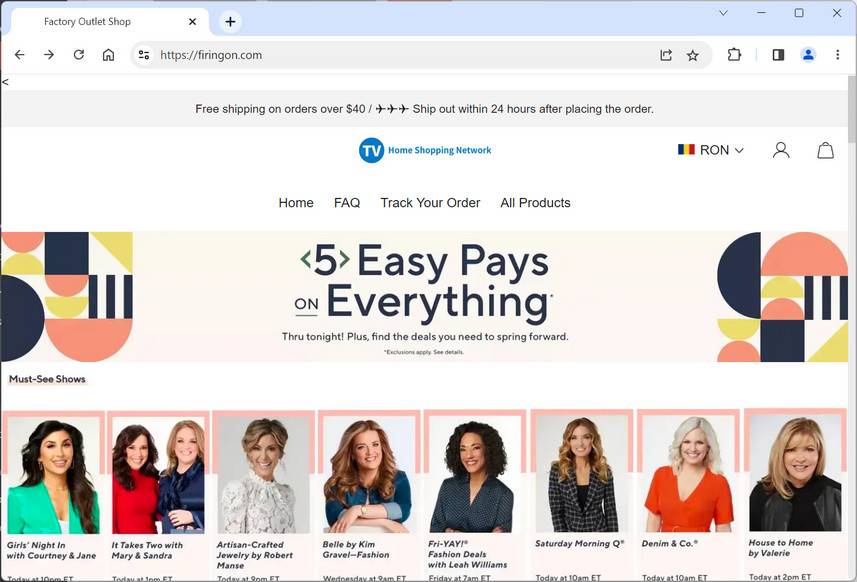If you are a fan of the Home Shopping Network (HSN), you might have come across some websites that claim to be HSN Factory Outlet Shop. These sites offer huge discounts on HSN products, such as clothing, jewelry, electronics, and more. But before you get tempted to place an order, you should know that these sites are not affiliated with HSN and are actually scam sites that aim to steal your money and personal information.

This Article Contains:
What are the HSN Factory Outlet Shop Scam Sites?
The HSN Factory Outlet Shop Scam Sites are fraudulent websites that use the HSN logo and brand name to lure unsuspecting customers. They pretend to be official outlets of HSN, but they are not authorized by HSN or any of its partners. They sell counterfeit or low-quality products, or they don’t deliver anything at all. They also collect your credit card details, email address, phone number, and other sensitive data that they can use for identity theft or other malicious purposes.
How do the HSN Factory Outlet Shop Scam Sites operate?
The HSN Factory Outlet Shop Scam Sites usually advertise on social media platforms, such as Facebook, Instagram, or Twitter. They use fake reviews, testimonials, and ratings to make their sites look legitimate and trustworthy. They also use domain names that are similar to HSN’s official website, such as hsnfactoryoutletshop.com, hsnoutletstore.com, or hsnfactory.com. They offer products that are marked down by 50% or more, and they claim to have limited stock and time offers. They also offer free shipping and easy returns to entice you to buy from them.
However, once you place an order, you will either receive a confirmation email with a fake tracking number, or you will not receive any confirmation at all. If you try to contact their customer service, you will either get no response or a generic reply that does not address your issue. If you receive your order, you will find out that the products are not as described, defective, damaged, or counterfeit. If you try to return them, you will either be asked to pay for the shipping cost and restocking fee, or you will not get any refund at all.
What to do if you have fallen victim?
If you have fallen victim to the HSN Factory Outlet Shop Scam Sites, you should take the following steps:
- Contact your bank or credit card company and dispute the charges. You may be able to get your money back if you act quickly.
- Change your passwords and PINs for your online accounts, especially if you used the same ones for the scam sites.
- Report the scam sites to HSN’s official customer service at 1-800-284-5757 or email them at hsncustomerservice@hsn.com. You can also report them to the Federal Trade Commission (FTC) at https://reportfraud.ftc.gov/ or the Better Business Bureau (BBB) at https://www.bbb.org/scamtracker/.
- Warn your friends and family about the scam sites and advise them not to buy from them.
Conclusion
The HSN Factory Outlet Shop Scam Sites are a serious threat to online shoppers who love HSN products. They use deceptive tactics to trick you into giving them your money and personal information. You should always be careful when shopping online and verify the legitimacy of the website before making a purchase. You should also check the reviews and ratings of the website from other sources, such as Trustpilot, Sitejabber, or Scamadviser. You should also avoid clicking on links or ads that seem too good to be true. Remember, if it sounds too good to be true, it probably is.










